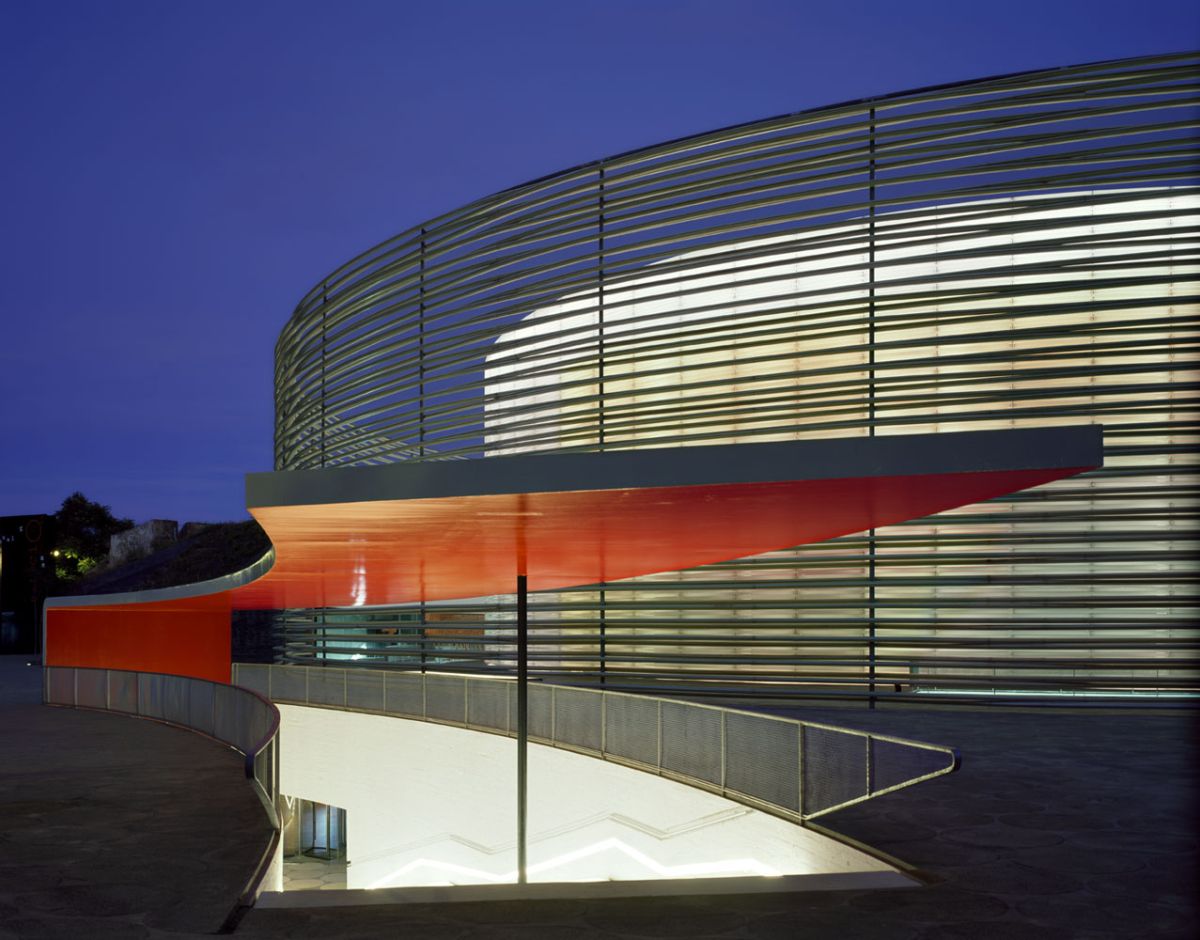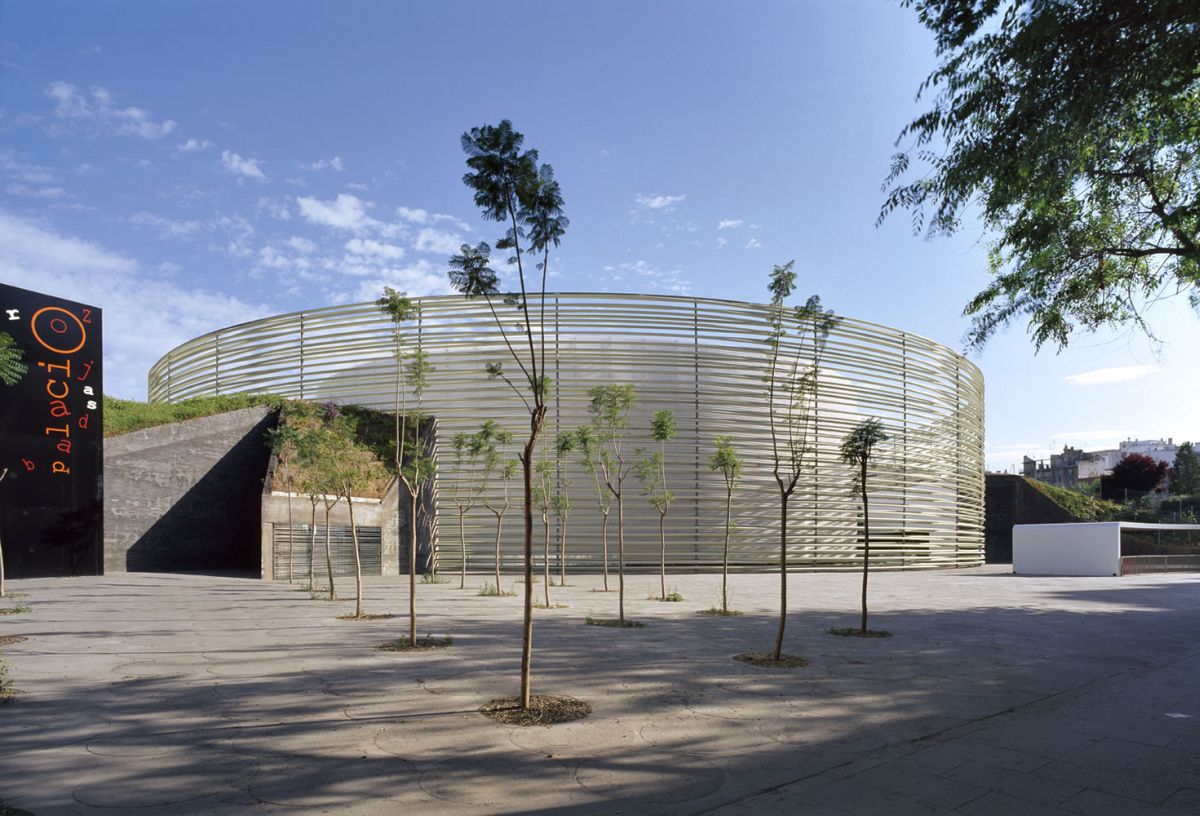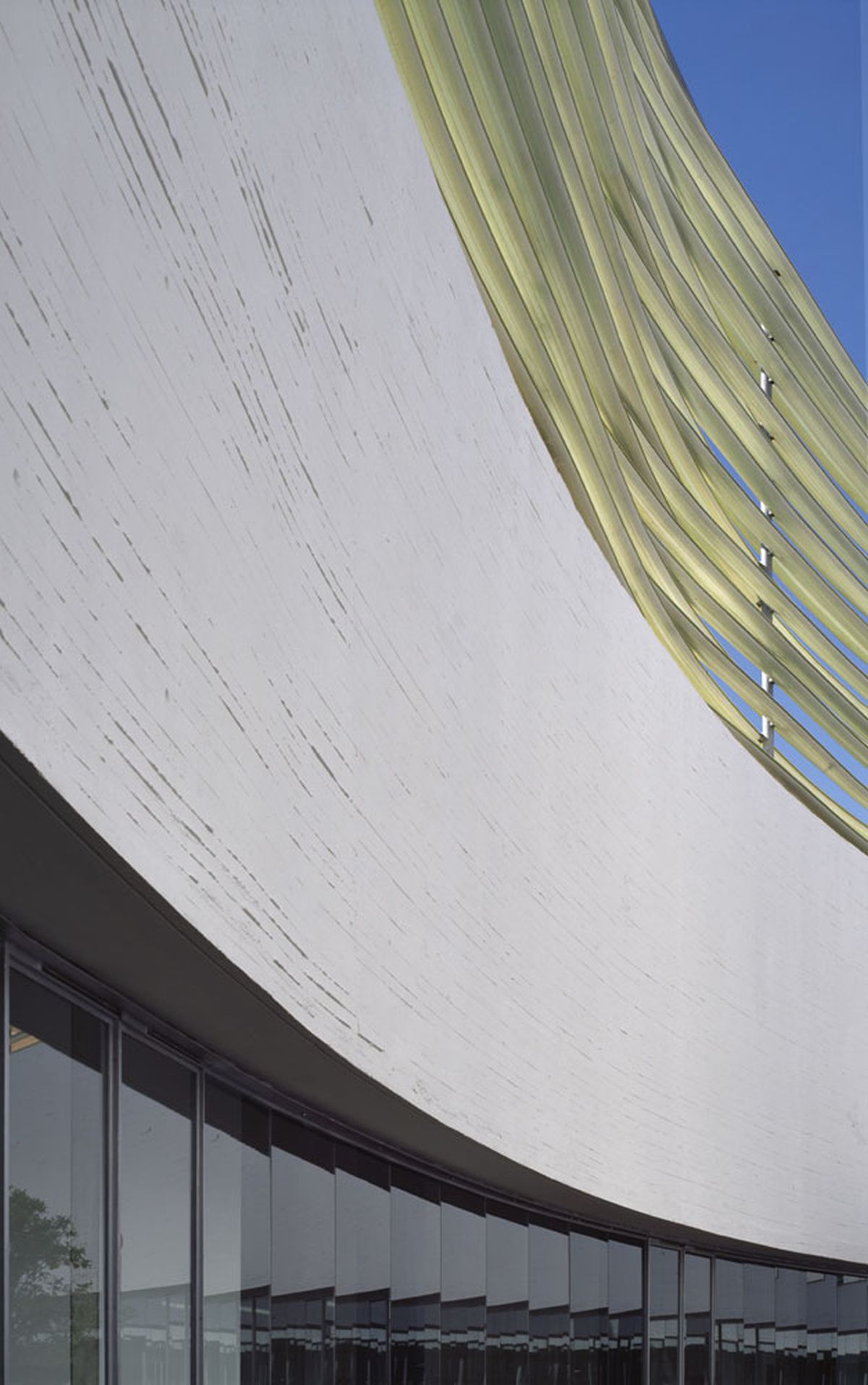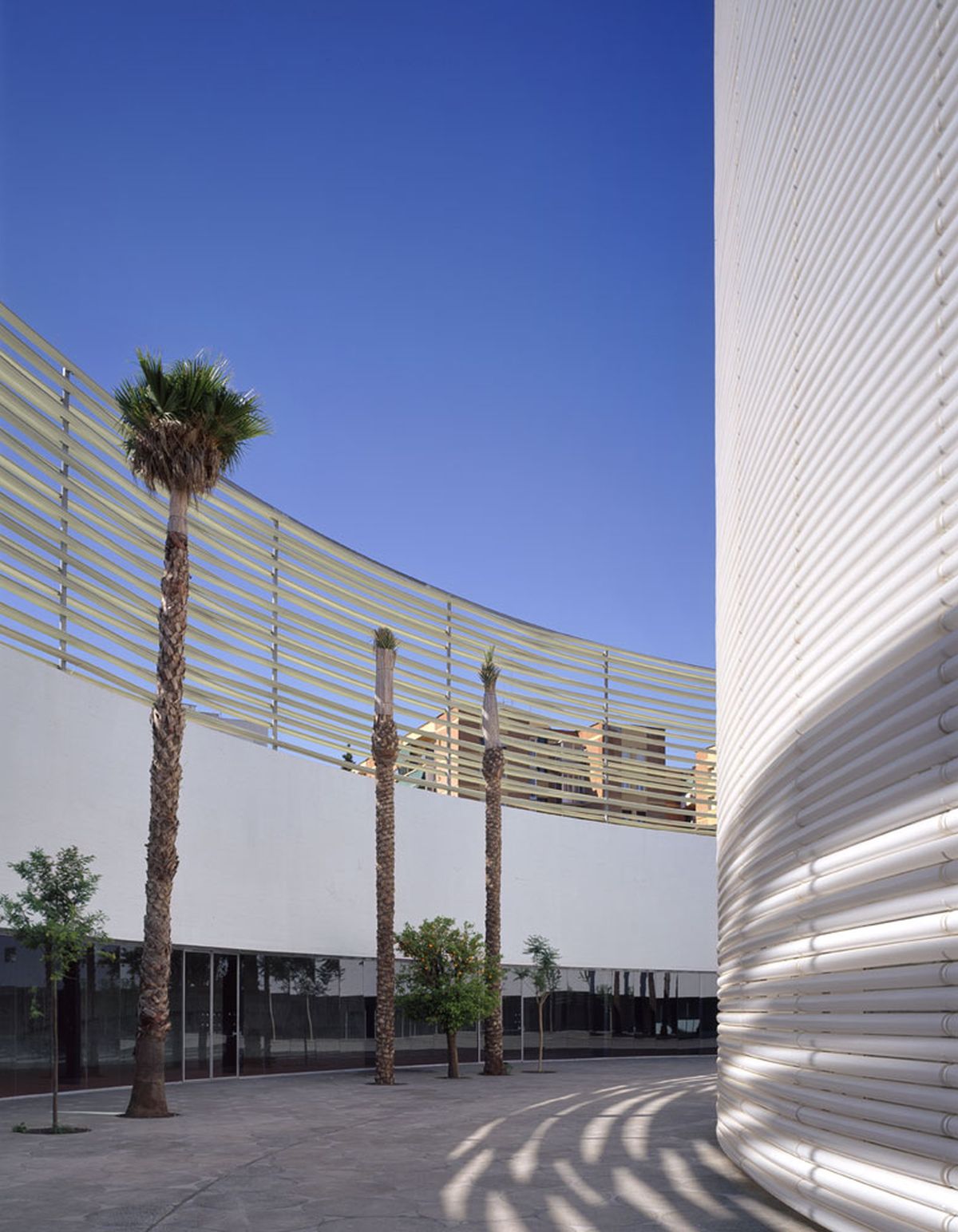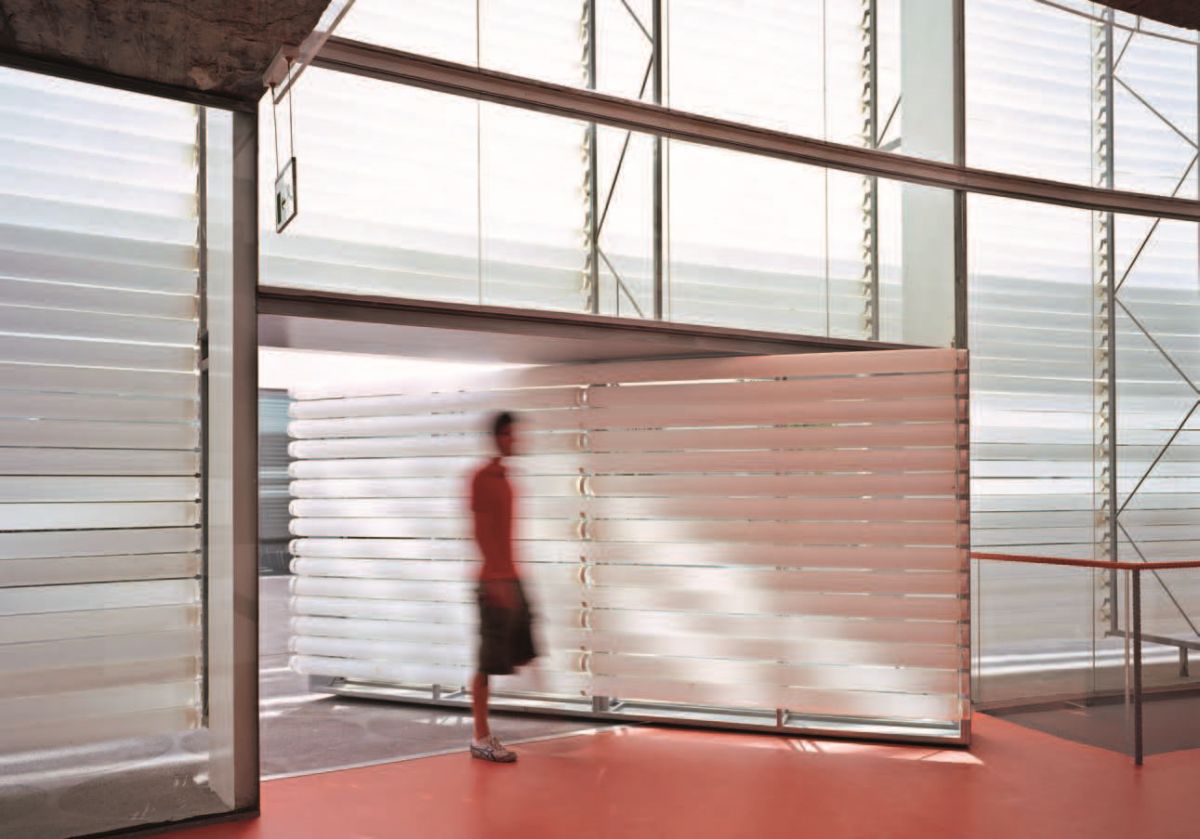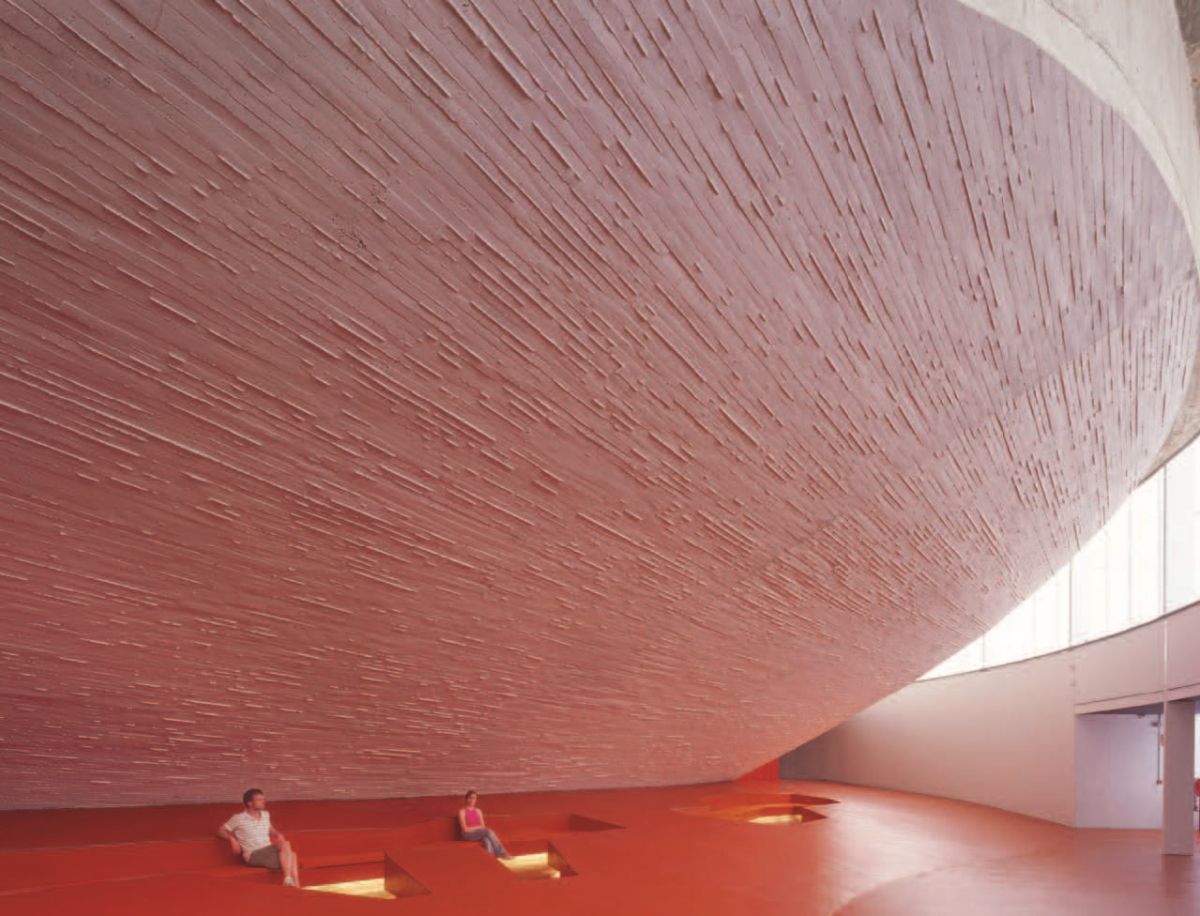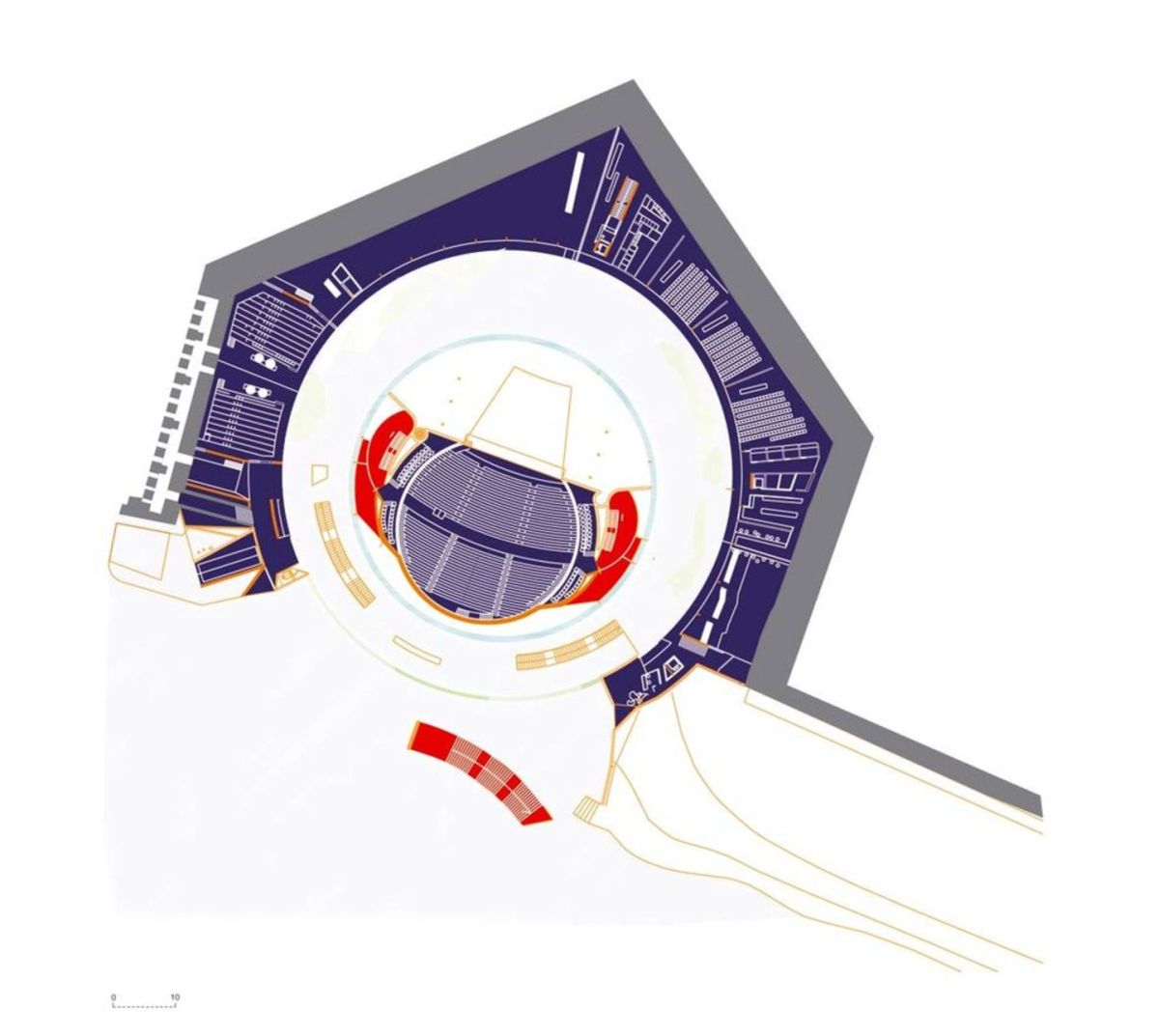The Badajoz Congress Center, designed by the Spanish architecture firm Selgas Cano, is a stunning example of how contemporary architecture can blend seamlessly with historical heritage. The center is situated inside a pentagonal molded fortress, which served as part of the seventeenth-century city defensive walls and, more recently, as a bullring since 1859.
Rather than ignoring the fortress’s unique features, Selgas Cano embraced them, creating a daring scheme that both acknowledged and preserved the site’s heritage. The design sought to integrate the fortress’s original features and invite them to form part of the center’s identity. The result is a remarkable building that showcases an innovative and respectful approach to architecture.
Badajoz Congress Center Technical Information
- Architects: Selgas Cano
- Typology: Cultural Architecture / Congress Center
- Location: Badajoz, Spain
- Materials: Methacrylate, Fiberglass
- Client: Regional Government of Extremadura
- Project year: 2006
- Photographs: © Roland Halbe and © Jesús Granada
As the work progressed at the site, instead of something appearing, it disappeared diluted in that palimpsest inheritance that from the beginning we assumed and which maintenance became our unique objective.
– Selgas Cano1
Badajoz Congress Center Photographs
Text by the Architects
The Badajoz Congress Center is situated inside a pentagonal molded fortress, part of the seventeenth-century city dividers. There used to be an old bullring on the site, going back to 1859. The development utilizes the bullring’s exhumed foot-shaped impression as a beginning stage, constructing the congress lobby in the space where the enclosure used to be and wrapping it with a straightforward skin produced using fiberglass rings.
The round and hollow walled-in area of the main corridor is encompassed by translucent methacrylate panels, transforming it into a brilliant volume around evening time. So as to keep the clarity of the volume in place, the primary access is done through a staircase going down from the public square in front of the building to an underground lobby, illuminated by skylights and sunken courtyards.
The complexity of placing a Palace of Congresses in an empty spot and that this spot continues being empty is resolved by means of a easy trick that consists of reversing the place for the spectators and bringing the white earth to the center, and taking the empty center alongside the spectators, to the place of the old spectator terraces.
– SelgasCano
The project preserves the character of this space obtained in the 19th century after emptying up a circle in the massive pentagonal fortress, thus distorting its defensive nature. To maintain this footprint, the rest of the site is filled radially, distributing as many elements of the program as possible underground. This poses a new question: how to place the large congress hall in the open central space and at the same maintain the impression of it being empty.
The inventive device that allows achieving this effect involves taking the spectators’ area to the old arena and moving the central space to the stands. The scheme is rounded off by surrounding the new hall with a cylindrical enclosure that juts out five floors above street level, which, made of translucent methacrylate, manages to dematerialize the building and turn it into a luminous volume, which is surrounded by yet another external cylinder formed by polyester and fiberglass rings that join the game by marking an uncertain limit to the deceptive void.
José Selgas describes the work of the office in the following way:
We like to be open to every possibility in every project. We come with open eyes and with the possibility to go in any direction. We are architects, not artists. We always try to bring something to the table that is beyond our personal thoughts. All of our projects incorporate different inputs that come from different directions, but typically, they’re always related to nature, climate, society, history, scale, and—more than anything—economy.
– José Selgas
Badajoz Congress Center Plans
Badajoz Congress Gallery
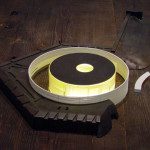
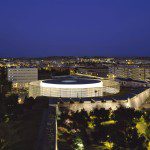
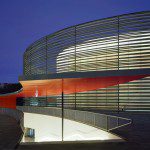
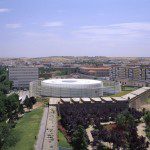

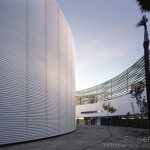
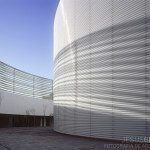

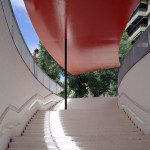
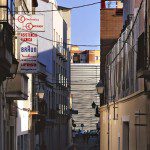
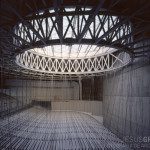
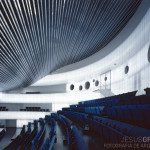

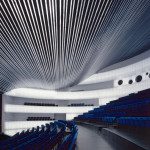
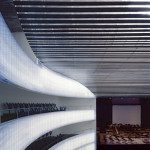
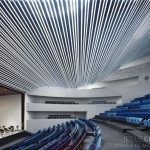
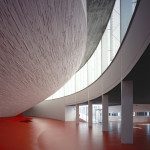

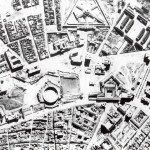
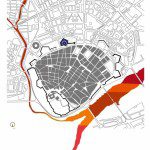
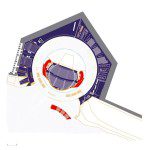




© Jesús Granada
About SelgasCano
SelgasCano is a Spanish architectural office based in Madrid and founded in 1998 by José Selgas and Lucía Cano. The atelier focuses on the use of polychromy, the creative exploration of new materials, and the relationship between architecture and its surrounding landscape.
Their work includes three Auditoriums, and congress centers in Spain, several office buildings such as Second Home, a school in Kibera Nairobi, a vaccination center in Turkana Kenya, and several public pavilions, including the 15th annual Serpentine Pavilion 2015 in London, which was re-installed at La Brea Tar Pits in Los Angeles in 2019.
- El Croquis 171: Selgascano 2003-2013 (English and Spanish Edition)

